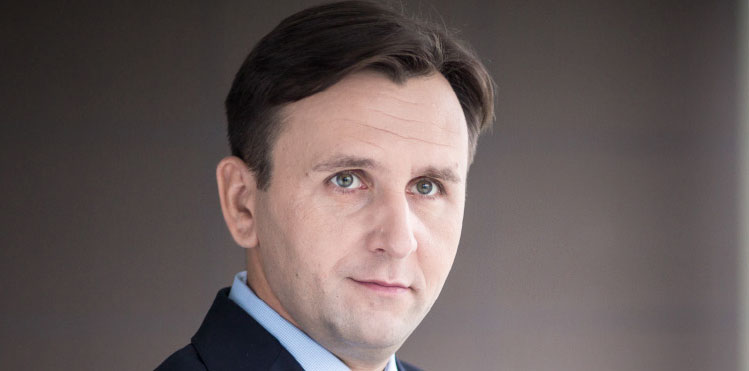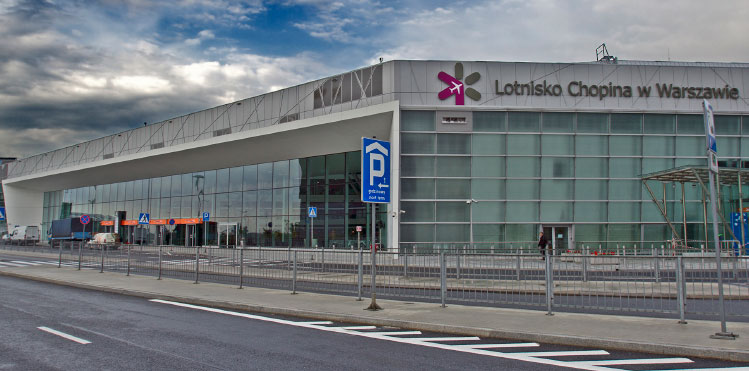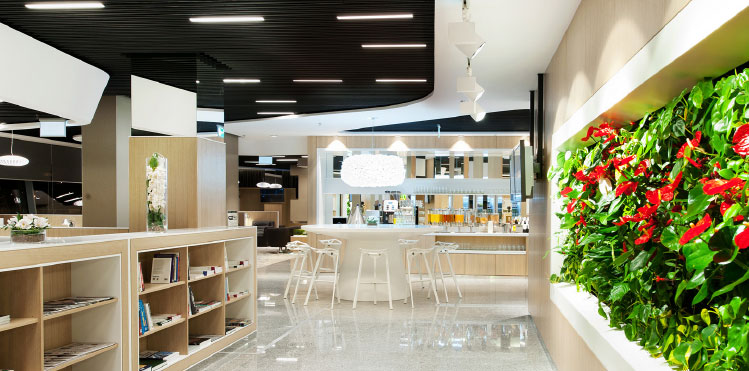
Michał Kaczmarzyk, Director, Warsaw Chopin Airport: “We expect further growth in passenger numbers in the coming years, at the level of 5-6% annually. It is a great opportunity for airlines, which can expect at least one to two million more passengers every year.”
Modernisation of the old part of Warsaw Chopin’s Terminal A has effectively given the airport a brand new, state-of-the-art facility. This has created new opportunities for the growing airport, in terms of facilitating further route development and continuing to enhance the passenger experience. Michał Kaczmarzyk, Director, Warsaw Chopin Airport, shared his vision with Ross Falconer.
Poland remains a very promising market in terms of air service development. In 2014, Polish airports handled a total of 27.2 million passengers – up 8.7% year-on-year – which was the best result in the country’s history. Warsaw Chopin Airport remains the leader, with 10.6 million passengers last year, and these are exciting times for the airport. It is embracing growth with a progressive strategy, which is seeing investments to expand capacity and enhance the passenger experience. Most recently, in May the modernised old part of Terminal A was opened, and this news was coupled with strong traffic growth in Q1 2015 and further new route announcements.
All of this is music to the ears of Michał Kaczmarzyk, Director, Warsaw Chopin Airport. “We expect further growth in passenger numbers in the coming years, at the level of 5-6% annually. It is a great opportunity for airlines, which can expect at least one to two million more passengers every year,” he enthused.
Record passenger numbers are forecast for 2015, with throughput expected to exceed 11 million. Kaczmarzyk is clearly in tune with the opportunities open to the growing airport, and is seizing them with both hands. “Thanks to the opening of the modernised part of the terminal, along with completion of the runway works and apron extension, we can easily accommodate 25 million passengers annually – we are ready to face such numbers,” he commented.
The strategic goal is to deliver the greatest possible choice for passengers through a wide route network. Warsaw Chopin currently offers direct connections to 85 airports in 38 countries on four continents. These are operated by almost 30 carriers, but about 40% of the airport’s traffic is generated by LOT Polish Airlines – its biggest and most important business partner, with which it has worked hard to build a regional transfer hub in Warsaw.

The modernisation of the old part of Warsaw Chopin’s Terminal A has effectively given the airport a brand new, state-of-the-art facility. The enhancements are myriad, with more space, more check-in counters, 15 new shops, and 10 new bars and restaurants.
“Over the last two years, LOT has not been able to extend its network of routes due to the restrictions related to state aid. However, it has announced a real explosion of new routes next year, including long-haul routes to Asia. We are already looking forward to this,” Kaczmarzyk explained. “We are also keen on developing good cooperation with other airlines and extending their presence in the Polish market. Therefore, we are happy to see the success of Wizz Air – the second biggest air carrier in Warsaw. In spring this year, the airline added a fifth aircraft to its base at Warsaw Chopin, which has already allowed it to open 10 new routes, with another two to follow in the autumn.”
Passenger experience enhancements
The new terminal, or modernised old part of the terminal, delivers a world-class product for passengers. The enhancements are myriad, with more space, more check-in counters, 15 new shops, and 10 new bars and restaurants. Innovation abounds, both in terms of the passenger experience and environmentally. The new terminal boasts a rooftop solar power plant – the biggest installation of its kind in Poland. The solar panels cover 7,000sqm and will meet about 25% of the airport’s power demand.
Among the most visible passenger enhancements are the new gate readers for automated boarding pass control, which were commissioned as part of the terminal modernisation. “They facilitate control and improve efficiency, as each gate has a higher throughput than the former manual control,” Kaczmarzyk noted. There are future plans to launch a payable fast-track service.
Meanwhile, two new high-end executive lounges were recently opened – Fantazja and Preludium. Like the airport’s existing three executive lounges, the names refer to famous pieces composed by Fryderyk Chopin – the airport’s namesake.
“Another great convenience is the underground tunnel that connects the new terminal with the airport railway station. Thanks to the tunnel, the time required to get from the arrivals hall to the platform was reduced from 10 minutes to less than four minutes,” Kaczmarzyk added.
“World-class shopping centre”

Two new high-end executive lounges were recently opened – Fantazja and Preludium. Like the airport’s existing three executive lounges, the names refer to famous pieces composed by Fryderyk Chopin – the airport’s namesake.
Non-aviation revenues are, of course, vital and currently account for about 30% of Warsaw Chopin’s income. This share grows each year, becoming an increasingly important part of the airport’s business. The new terminal features a 3,000sqm area dedicated to retail and food & beverage, with a product range including such world-renowned brands as Ermenegildo Zegna, Burberry, Emporio Armani, and Michael Kors. There is also an Aelia Duty Free shop, an M&M’s store, and the first Samsung branded store in a Polish airport.
Kaczmarzyk certainly speaks enthusiastically about the new retail offer. “Global brands available in our shopping arcade will allow passengers to feel as if they were at the best Paris, London or Milan department stores, which is exactly what our customers expect,” he commented. “All of this has turned Warsaw Chopin Airport into a world-class shopping centre, which can offer much more than the usual range of duty free goods. Our first analyses prove that it has been a great success, and really appreciated by our customers.”
The airport is not stopping there in the development of its non-aviation business. By the end of next year, a five-star hotel operating under the Renaissance brand will open at Warsaw Chopin – the first step towards the development of the Chopin Airport City business complex.
This symphony of developments is creating a vibrant regional hub. “All these changes enhance the comfort of passengers and boost the airport’s capacity, which can grow to 20 million annually in the next 15 years. This means that our airport can become the biggest and most important in Central Europe,” Kaczmarzyk concluded.







